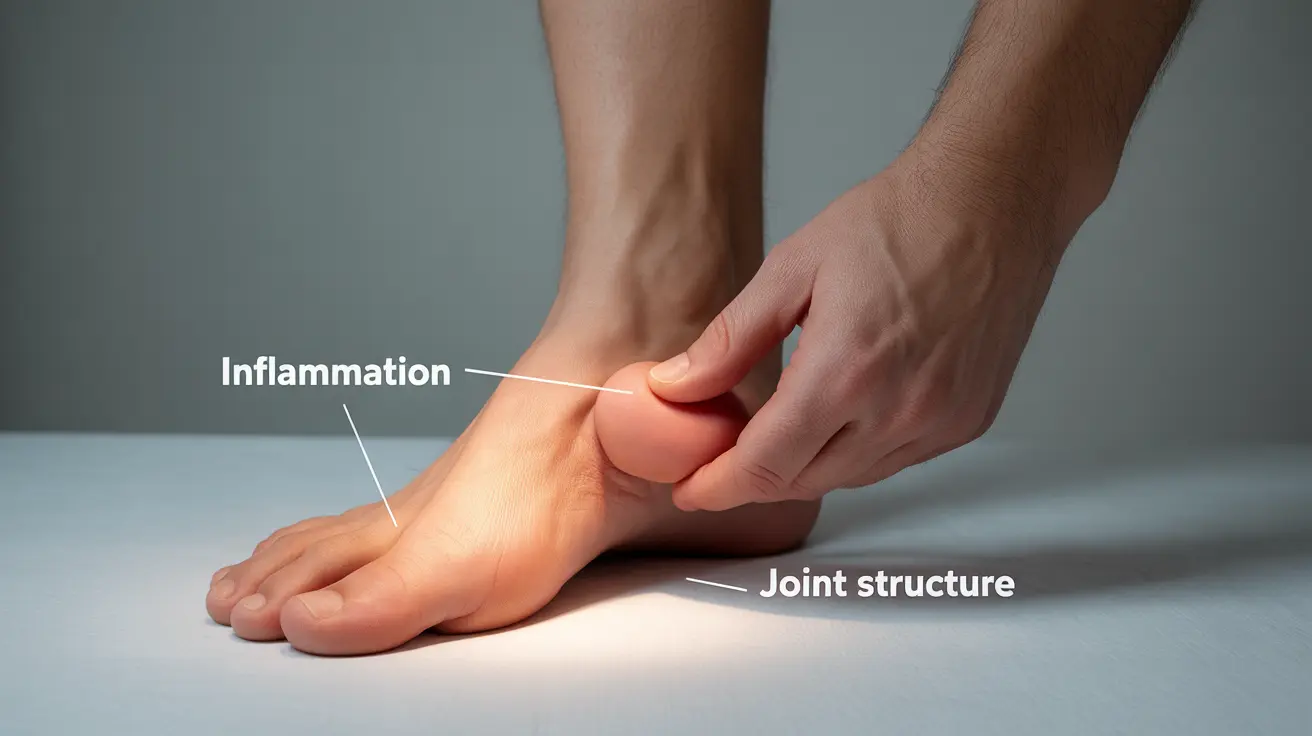Dactylitis, often referred to as "sausage digits" due to the characteristic swelling it causes, is a significant inflammatory condition that affects the fingers and toes. This comprehensive guide explores the various causes, diagnostic approaches, and treatment options available for people experiencing this challenging condition.
Understanding dactylitis is crucial because it can be an early warning sign of several serious underlying conditions, particularly inflammatory arthritis. Early recognition and proper treatment can help prevent long-term joint damage and improve overall outcomes.
What Is Dactylitis and Its Common Causes
Dactylitis occurs when inflammation affects both the joints and surrounding soft tissues of fingers or toes, causing them to swell uniformly along their entire length. This distinctive swelling pattern creates the characteristic "sausage-like" appearance that helps distinguish it from other types of joint inflammation.
Primary Causes and Associated Conditions
Several conditions can trigger dactylitis:
- Psoriatic arthritis (PsA)
- Spondyloarthritis
- Sickle cell disease
- Tuberculosis
- Borrelia (Lyme disease) infection
- Sarcoidosis
Diagnostic Process and Evaluation
Proper diagnosis of dactylitis requires a thorough medical evaluation and often involves multiple diagnostic tools to confirm the underlying cause and assess the extent of inflammation.
Clinical Examination
During the physical examination, doctors look for specific characteristics:
- Uniform swelling along the entire digit
- Tenderness to touch
- Reduced range of motion
- Associated symptoms like skin changes or nail abnormalities
Diagnostic Testing
Several imaging and laboratory tests may be necessary:
- Magnetic Resonance Imaging (MRI)
- Ultrasound
- X-rays
- Blood tests for inflammatory markers
- Specific disease markers depending on suspected cause
Treatment Approaches and Management
Treatment for dactylitis typically involves a multi-faceted approach, targeting both the underlying condition and the immediate symptoms.
Medication Options
Several types of medications may be prescribed:
- Nonsteroidal anti-inflammatory drugs (NSAIDs)
- Disease-modifying antirheumatic drugs (DMARDs)
- Biologic medications
- Corticosteroid injections for acute flares
Lifestyle and Self-Management Strategies
Supporting medical treatment with lifestyle modifications can help manage symptoms:
- Regular gentle exercise and stretching
- Protection of affected joints during activities
- Heat and cold therapy
- Stress management techniques
Frequently Asked Questions
- What are the most common causes of dactylitis, and what other conditions can produce sausage fingers besides psoriatic arthritis?
The most common causes include psoriatic arthritis, spondyloarthritis, and sickle cell disease. Other conditions that can cause sausage fingers include infections (like tuberculosis and Lyme disease), gout, and sarcoidosis. Each condition may present with slightly different patterns and associated symptoms.
- How can you tell the difference between dactylitis and other types of finger or toe swelling, and what tests or imaging might a doctor use for diagnosis?
Dactylitis produces uniform swelling along the entire digit, while other conditions might cause more localized swelling. Doctors typically use MRI, ultrasound, and X-rays to confirm dactylitis and determine its cause. Blood tests help identify specific inflammatory markers and rule out other conditions.
- What treatments are available for dactylitis caused by psoriatic arthritis, and are there medications that can help prevent long-term joint damage?
Treatment options include NSAIDs for pain relief, DMARDs like methotrexate, and biological medications that target specific inflammatory pathways. These medications, particularly DMARDs and biologics, can help prevent or slow joint damage when started early in the disease course.
- Can dactylitis go away on its own, or is medical treatment always necessary, especially if it's related to infections or sickle cell disease?
While mild cases might improve with rest and self-care, medical treatment is usually necessary to prevent complications and address the underlying cause. For infection-related dactylitis, antibiotics are essential. In sickle cell disease, specific treatments for pain crises and disease management are required.
- Why is early recognition of dactylitis important for people with psoriasis or joint pain, and what are the risks of delaying treatment?
Early recognition and treatment of dactylitis are crucial because it can indicate the onset or progression of inflammatory arthritis. Delayed treatment may lead to permanent joint damage, decreased function, and more difficult-to-treat disease. Early intervention often results in better long-term outcomes and quality of life.




